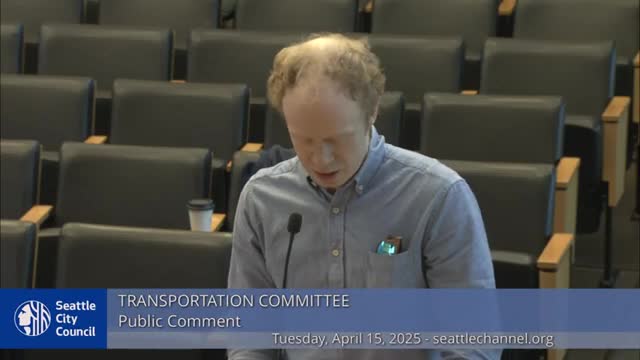Seattle outlines new automated traffic safety camera legislation to improve street safety
April 17, 2025 | Seattle, King County, Washington
Thanks to Scribe from Workplace AI , all articles about Washington are free for you to enjoy throughout 2025!

This article was created by AI using a video recording of the meeting. It summarizes the key points discussed, but for full details and context, please refer to the video of the full meeting. Link to Full Meeting
The session began with public comments highlighting concerns about the impact of traffic enforcement on communities of color. Speakers emphasized the need for equitable treatment in traffic safety measures, noting that many residents feel over-enforced yet under-invested in regarding transportation safety. Gordon, a community advocate, pointed out the importance of issuing warnings for first-time violations to promote behavioral change rather than merely generating revenue through fines.
Clara Canter, representing the organization Whose Streets Are Streets?, echoed these sentiments, arguing that the proposed legislation could disproportionately affect BIPOC and low-income neighborhoods. She criticized the high fine levels set for violations, which are significantly above those in other cities, and expressed concern over the removal of warning policies for first-time offenders.
Ethan Campbell, a cyclist and contributor to a national report on traffic safety, urged the committee to reconsider aspects of the legislation that deviate from best practices. He advocated for reinstating first violation warnings and ensuring that revenue from traffic fines is directed specifically toward street safety improvements rather than broader operational costs.
Rick Grossman, a resident, raised issues related to noise enforcement and sidewalk safety, particularly for seniors, while David Haynes called for stricter enforcement of various traffic violations, including excessive noise from modified vehicles.
Following public testimony, the committee moved to discuss the automated traffic safety camera legislation. The SDOT representatives provided an overview of the proposed changes, which aim to enhance traffic safety in light of recent state law modifications. The legislation seeks to authorize the deployment of automated cameras in non-school zones, a move seen as essential for improving overall safety for all road users.
The committee acknowledged the importance of traffic calming measures, such as speed bumps, and the need for a comprehensive approach to traffic safety that includes both enforcement and infrastructure improvements. The discussions underscored a commitment to ensuring that the implementation of traffic safety measures is equitable and effective.
As the meeting concluded, the committee members expressed gratitude for the public input and emphasized the need for ongoing dialogue as the legislation progresses. The next steps will involve further refinement of the proposed measures to address the concerns raised during the meeting.
Converted from Seattle City Council Transportation Committee 4/15/2025 meeting on April 17, 2025
Link to Full Meeting
Comments
View full meeting
This article is based on a recent meeting—watch the full video and explore the complete transcript for deeper insights into the discussion.
View full meeting


